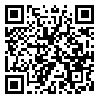Volume 2, Issue 2 And Supplement (Absteracts-Spring 2021)
J Vessel Circ 2021, 2(2 And Supplement): 5-5 |
Back to browse issues page
Download citation:
BibTeX | RIS | EndNote | Medlars | ProCite | Reference Manager | RefWorks
Send citation to:



BibTeX | RIS | EndNote | Medlars | ProCite | Reference Manager | RefWorks
Send citation to:
Chitsaz A. The first-line management of Psychogenic Non-Epileptic Seizures (PNES) in the emergency. J Vessel Circ 2021; 2 (2) :5-5
URL: http://jvessels.muq.ac.ir/article-1-161-en.html
URL: http://jvessels.muq.ac.ir/article-1-161-en.html
Department of Neurology, Isfahan University of Medical Sciences, Isfahan, Iran
Abstract: (793 Views)
Background: Non-epileptic seizures (PNES) are abnormal paroxysmal psychic, sensory and/ or motor manifestations which resemble to epileptic seizure but are not related to abnormal epileptiform discharges. Distinguish non-epileptic events, especially PNES, from epileptic seizures (ES) constitutes a diagnostic challenge. Misdiagnoses are frequent, especially, when vide-EEG recording, the gold-standard for PNES confirmation, cannot be completed. The issue is further complicated in cases of combined PNES with ES in emergency units, a misdiagnosis can lead to extreme antiepileptic drug escalade, unassay resuscitation measures (intubation, catheterization, etc.) as well as need loss biology, imaging investigations and prolonged hospitalization. Early recognition is thus desirable to initiate adequate treatment and improve prognosis.
Review of literature and expert opinions: Experience-based strategies for the main clinical clues for physicians facing PNES in non-specialized units, before transferred to epileptologists and neuropsychiatrists are patient recall or witness-report that provide the first orientation for the diagnosis, recognizing that collected information may be inaccurate. Through analysis of an event on have video or live analysis may lead to clinical diagnosis with high level. Clinical signs are highly suggestive of PNES are: a fluctuating course, crying with gestures of frustration, pelvic thrusting, and eye closure during the episode, and absence of postictal confusion. Prolactinemia is a useful biomarker to distinguish PNES from ES.
Conclusion: PNES in the emergency requires a good knowledge of specific relevant features, homemade video and or live analysis of a seizure is the best diagnostic tools in the emergency.
Review of literature and expert opinions: Experience-based strategies for the main clinical clues for physicians facing PNES in non-specialized units, before transferred to epileptologists and neuropsychiatrists are patient recall or witness-report that provide the first orientation for the diagnosis, recognizing that collected information may be inaccurate. Through analysis of an event on have video or live analysis may lead to clinical diagnosis with high level. Clinical signs are highly suggestive of PNES are: a fluctuating course, crying with gestures of frustration, pelvic thrusting, and eye closure during the episode, and absence of postictal confusion. Prolactinemia is a useful biomarker to distinguish PNES from ES.
Conclusion: PNES in the emergency requires a good knowledge of specific relevant features, homemade video and or live analysis of a seizure is the best diagnostic tools in the emergency.
Type of Study: Review |
Subject:
vascular neurological diseases
Received: 2021/10/20 | Accepted: 2021/10/2 | Published: 2021/10/2
Received: 2021/10/20 | Accepted: 2021/10/2 | Published: 2021/10/2
| Rights and permissions | |
 |
This work is licensed under a Creative Commons Attribution-NonCommercial 4.0 International License. |






